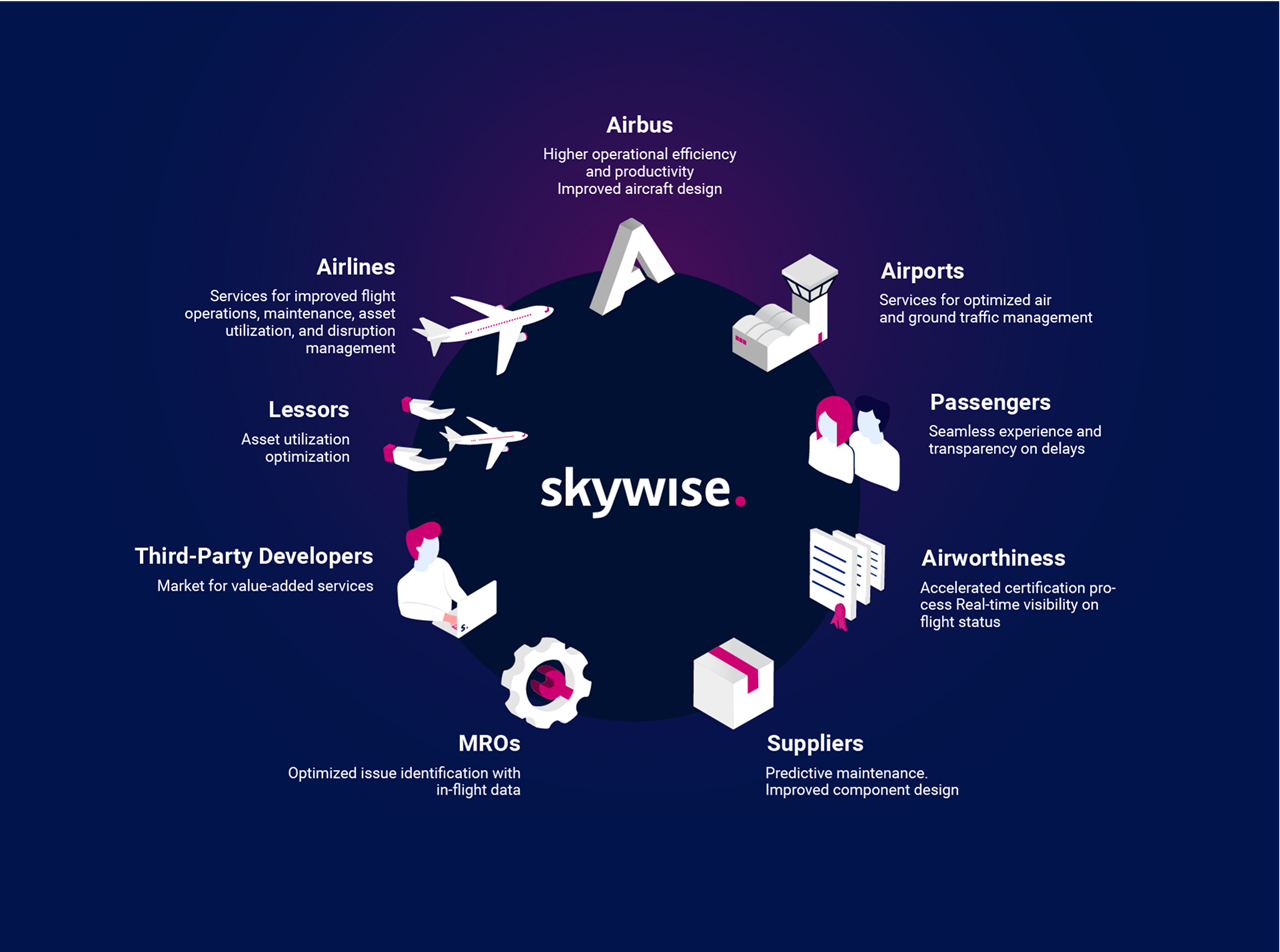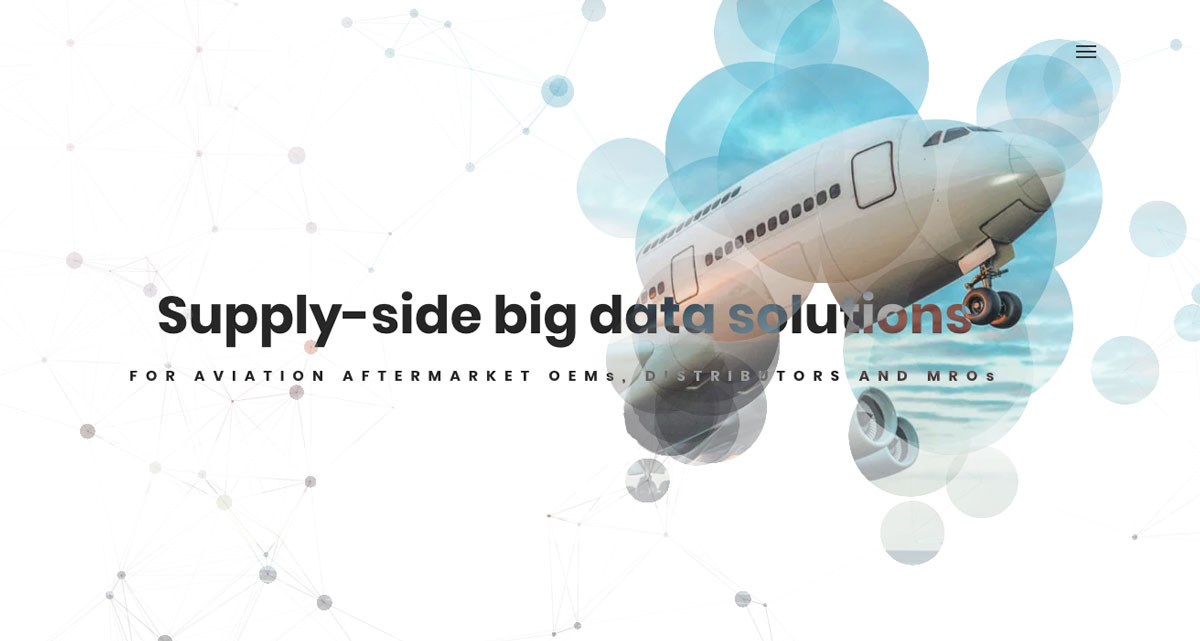Data analytics is the new frontier for aviation, and the competition is getting hot in the race to lead the industry. Some have set their sights on industry-wide domination, while others are more focused on niche areas of the industry. So who are the leading aviation data platforms and who are the up-and-comers?
In recent years, the market for data analysis and predictive analytics within the aviation industry has significantly matured, meaning that many of the promises made by fledgeling data platforms just a few years ago, now have vast data pools from which to make do on those promises.
But what does this mean for the industry? Simply put, it's a buyers market. Pricing, performance and features are becoming more competitive, providing you with quite a lot of options in data analytics solutions tailored to the aviation industry and MRO.
In this article, we look at five aviation data platforms that are pushing for market dominance or looking to reshape areas of the industry that are lagging in digitisation.
Skywise
We would be remiss if we did not begin this list with the platform associated with many of our own business offers. In partnership with one of the major pioneers in big-data integration Palantir Technologies, our very own parent company Airbus launched the aviation data platform Skywise in 2017.
From the get-go, this aviation data platform aimed to become the "single platform of reference used by all major aviation players to improve their operational performance and business results and to support their own digital transformation."
Since its inception, Skywise has become widely adopted throughout the industry—providing all users with one single access point to their enriched data by bringing together aviation data from multiple sources across the industry into one secure cloud-based platform.
The platform is built to collect, aggregate, and share airline data from work orders, spares consumption, component data, fleet configuration, sensor data and flight schedules. Additional data sources traditionally shared with Airbus and hosted only on isolated servers—such as aircraft condition monitoring reports, parts replacements, on-board aircraft data and technical documentation—can be integrated into the platform and combine with the full scope of platform data to allow operators a broader range of analysis and decision-making.
The platform is used by over 100+ airlines all across the globe, contributing to a vast and industry-wide data pool from which airlines and operators can utilise in the operations.
RELATED ARTICLE:
5 things to consider about Big Data in the aviation aftermarket

Honeywell Forge
The data analytics platform Honeywell Forge spans across several industries but was released for the aviation industry in 2019.
The platform provided predictive health monitoring capabilities through the collection, cleaning and analysis of streams of diverse data. This data is collected and aggregated based on its source—for example, aircraft, airport, government or general Honeywell sources.
The platform promises real-time insights and aircraft health data to improve an airline's understanding of its fleet, profitability and passenger experience.
In the latest string of strategic partnerships to respond to the growing demand for data analytics and predictive modelling solutions, Honeywell Forge partnered with another powerhouse in the aviation industry, Lufthansa Technik, to join forces with their AVIATAR platform and provide an even more powerful tool in improving aircraft availability through data analytics.
RELATED ARTICLE:
Aviation Cybersecurity: Is the industry behind the curve?

AVIATAR
Lufthansa Technik has been on a winning track of digital innovations for several years now. We spoke with Olivier Krüger, CEO of Lufthansa Systems, during the start of 2019 as he told us about the future development of their digital offerings.
Lufthansa Technik, one of the world's leading MROs, is on the front line of innovation and well on the road to what's becoming known as MRO 4.0.
The company made waves when they launched their cloud-based digital aviation platform AVIATOR in 2017, and the progress on the project has been ramping up ever since. What started after an 18 month development period, and launched with seven apps that covered things like fault analytics, condition monitoring, and performance metrics, has grown into fully fleshed out aircraft health monitoring system which provides real-time support for complex fleet management and forecasting.
Contrary to the "under-lock-and-key" culture that is more common throughout the industry, AVAITAR allows more personal freedom with how it is used, even going so far as making a software development kit available to all airlines and potential partners.
RELATED ARTICLE:
Facing Costly Data Uncertainties, the MRO Industry Adopts Blockchain Tech

Flight Deck
Today if you are a supplier, there are no real reliable, data-driven solutions for genuinely understanding the ebbs and flows of the aftermarket—and how a supplier can find opportunity in it.
Beep Analytics' Flight Deck platform aims to correct that oversight. It's a solution that compiles a lot of data that originates from the supplier itself—data that relates to the aircraft, who are the MROs that are working on the components, how much aircraft is flying, etc.
This aviation data platform then aggregates and sorts all the data. It blends all the information together, to create insights on how the marketplace for a supplier looks. It shows what parts of the market the supplier is covering, and what part of the market they are not and could expand into.
It also shows who the competitors are, and where their strengths and weaknesses are—in regards to covering the aftermarket. It helps them to build the background data that they need to do better supply chain planning.
Speaking with Beep Analytics founder and CEO, Jens Peder Pedersen, it becomes quite clear that the small Copenhagen-based business is on a mission to do something which not many others are doing.
"If a supplier doesn't understand why the demand for a specific part is fluctuating, or understand what is causing a possible underlying demand on the airline side, it becomes impossible to plan how and when to have that part available in their stock."
According to Pedersen, the team at Beep Analytics doesn't think of their Flight Deck solution as "middle-ware." There are several data source providers in the industry, Beep Analytics themselves provides some of that data, and they feel the real strength is knowing what to do with that data.
RELATED ARTICLE:
How connected aircraft could save the airline industry up to US$15bn

Enspan
Development on this supply chain digital ecosystem began as Parts Pedigree in partnership with Deloitte in 2018. We cover Parts Pedigree's quest for digitising aircraft part records using blockchain after meeting their CEO Tristan Whitehead at MRO Europe 2018.
Since then, the company, now called Enspan, has expanded its focus to encompass more supply chain industries, but narrows the focus of its Parts Pedigree solution is what they described as "mobile app solution that provides parts history, track and trace capability and stores digital documentation on a part chronology which creates a 'digital logistical twin."
In an adjacent article to this one on the dreams of a paperless aviation supply chain, we reconnected with Enspan's CEO Tristan Whitehead, to learn more about the expansion of the companies focus, and how it's ambitions of cleaning up the aviation supply chain with data encryption and an open development platform.
"Initially, we set out to create a more efficient way to track and trace parts and then securely share that information with parties within and ecosystem. But we realised that the broader scope of our platform could be used across multiple supply chain industries. However, we maintained our focus on the aerospace industry with our application Parts Pedigree, which has a robust set of features specific to the aerospace industry—such as, the database structure and documentation."
Whitehead went on to explain that they observed an issue that parties along the various stages of the supply chain, often big their data sets based on their immediate surrounding—usually one or two stages ahead or behind them in the supply chain. Rarely do these parties have a trustworthy overview of the data and processes of the entire supply chain.
"What we are trying to do is provide a home for that information, and create security protocols around so that everyone's data is safe and secure, but also allows parties to share it under specific conditions."